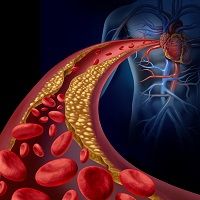Article
Phase 3 Data Highlights Inclisiran's Cholesterol-Lowering Ability
Author(s):
Data published in NEJM demonstrate the siRNA agent's ability to lower cholesterol in patients with multiple conditions.

The cholesterol-lowering ability of inclisiran—the first-in-class small interfering RNA (siRNA) agent from Novartis—is on full display thanks to a pair of studies published in a recent issue of the New England Journal of Medicine.
The published works included results of ORION-9 and an analysis of both the ORION-10 and ORION-11 trials—all 3 phase 3 trials were used in support of the New Drug Application (NDA) filed for inclisiran in December 2019.
"Inclisiran and its twice-yearly dosing schedule in 3 large trials consistently delivered potent and sustained cholesterol-lowering and was generally well tolerated," said Kausik Ray, MD, ORION-11 principal investigator and Deputy Director of Imperial Clinical Trials Unit at Imperial College, London, in a statement from Novartis, which acquired inclisiran in $9.7 billion acquisition of the Medicines Company in December 2019. "These data provide support for this groundbreaking approach to reducing LDL-C in patients who are not achieving LDL-C treatment goals with the current standard of care."
In the ORION-9 trial, 482 adult patients with heterozygous familial hypercholesterolemia were randomized in a 1:1 ratio to receive either subcutaneous injections of inclisiran at a 300 mg dosage or matching placebo. Patients were given 2 starter doses, followed by twice-yearly dosing, and followed for a total of 540 days.
With primary endpoints of the percent change from baseline in the LDL-C level on day 510 and the time-adjusted percent change from baseline in the LDL-C level between day 90 and day 540, investigators sought to evaluate the siRNA agent’s ability to lower LDL-C. At day 510, results suggested inclisiran had the ability to reduce LDL-C by 50% with a time-adjusted reduction of 45% between day 90 and day 540 compared to placebo.
The other article examined the use of inclisiran in a 284 mg dosage in addition to maximally tolerated lipid-lowering therapies in patients ASCVD (ORION-10) or ASCVD and ASCVD risk equivalents (ORION-11) over a 540 day period. The primary endpoints of these trials were the placebo-corrected percentage change in LDL cholesterol level from baseline to day 510 and the time-adjusted percentage change in LDL cholesterol level from baseline after day 90 and up to day 540.
In ORION-10, investigators observed a 52.3% (95% CI, 48.8 to 55.7) reduction in LDL-C levels at day 510 and a time-adjusted reduction of 53.8% (95% CI, 51.3 to 56.2) between days 90 and 540 (P< .001). In ORION-11, there was a 49.9% (95% CI, 46.6 to 53.1) reduction in LDL-C with inclisiran at day 510 and a time-adjusted reduction of 49.2% between days 90 and 540 (P< .001).
ORION-9 investigators Frederick Raal, MD, University of the Witwatersrand, Department of Medicine in South Africa, discussed the promising findings from last year with HCPLive while at the American Heart Association (AHA) 2019 Scientific Sessions:
These articles, “Inclisiran for the Treatment of Heterozygous Familial Hypercholesterolemia,” and “Two Phase 3 Trials of Inclisiran in Patients with Elevated LDL Cholesterol,” were published in the New England Journal of Medicine.





